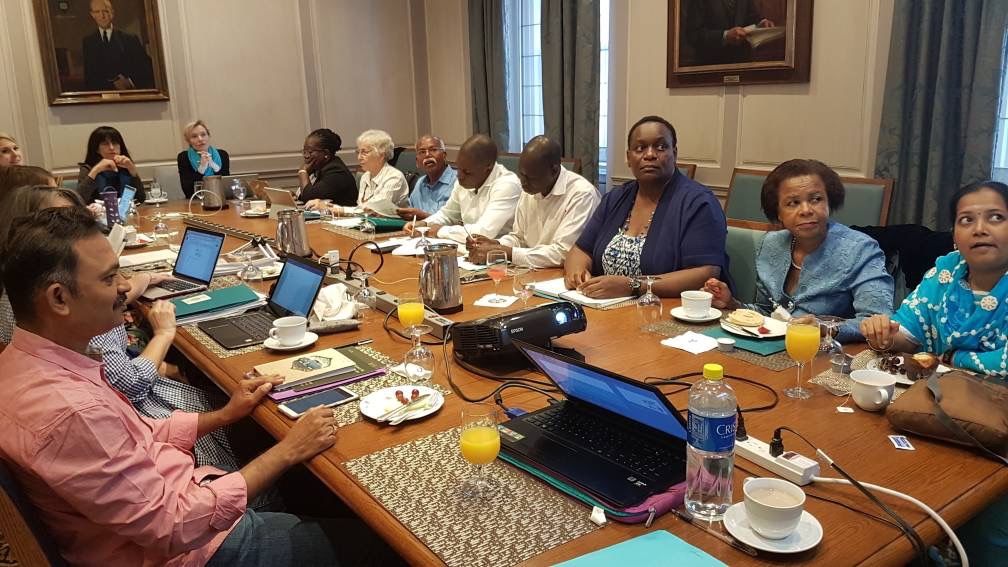Webinar: 5 Things You Need To Know About Gender

How do gender norms – society’s expectations about how men and women and boys and girls should look and behave – affect educational outcomes for girls? What does this mean for program design and evaluation?
And what is gender, anyway?
Those are the questions discussed in WomenStrong International’s September webinar with our newest Learning Lab members from Afghanistan, Guatemala, Malawi, Peru, Uganda, and Zimbabwe. These grantees are spending a year working to pilot, replicate, disseminate, and amplify solutions as they implement Girls’ Education and Empowerment programs in their communities.
Gender 101 Webinar
The Gender 101 webinar was presented by Dr. Chisina Kapungu, WomenStrong’s incoming Director of Learning and Organizational Development and an expert on gender, youth, and development.
Here are five things WomenStrong’s Learning Lab members learned about integrating gender into their work:
1. The terms gender and sex should not be used interchangeably.
“A person’s sex is biologically determined; it is defined by whether they have male or female sex chromosomes,” said Dr. Kapungu.
“Gender is a social construct…It is society’s assumptions about the way a man or woman should look and behave. It refers to the roles and responsibility, norms and expectations, created within families, societies and cultures.”
2. The research is clear: gender expectations influence educational outcomes for girls.
It’s well documented that adolescent girls are more likely to drop out of school because of a range of cultural pressures and societal expectations related to their gender: they are more likely to have increased household and caregiving responsibilities, for example, and parents may believe that boys’ school fees are a better investment because of a lack of economic prospects for girls in their countries or communities. Taboos around menstruation also keep girls at home once they reach puberty.
3. Programs that ignore gender – or worse, exploit stereotypes – harm girls and undermine program goals in the long run.
“Gender blind” programs treat all genders the same, regardless of their differences. While gender-blind programs may seem like a step forward on the journey to equality, they ignore the power dynamics and cultural norms that need to be addressed, in order to effect the changes that will help girls stay in school.
Even worse are “gender exploitative” programs that either intentionally or unintentionally take advantage of stereotypes in pursuit of project outcomes. For example, campaigns may exploit the “tough guy” or athletic images of boys or promote the maternal or “dutiful” images of girls, in order to market particular clubs or programs. Perpetuating these stereotypes is harmful, to both girls and boys and the culture at large.
4. Being gender-aware in development programming is not enough.
Being “gender-aware” – understanding, but working around, gender differences – is not enough, according to Dr. Kapungu. Instead, programs should seek to transform social and cultural norms to promote equality and achieve program objectives.
“The goal should be to advance gender equality, which will also improve development outcomes overall,” said Dr. Kapungu.
She recommends the Gender Integration Continuum tool developed by the Interagency Gender Working Group, a 22-year-old network of non-profits, USAID, and other cooperating agencies, which can help organizations examine how their own policies, programs, services, and models are addressing gender, in order to improve their outcomes.
5. Programs can and should integrate specific strategies to address gender.
There’s a lot of jargon when it comes to gender, education, and international development. No matter what terms are used, the goal should be for programs to take concrete, specific steps to examine how gender is taken into consideration when activities are designed, implemented, and evaluated.
“Gender mainstreaming” is a term often used to assert or mandate that concepts of gender equity are infused throughout policies and programming of an entire government, a ministry, a corporation, school, hospital, or any other institution. Gender mainstreaming, though, often doesn’t include concrete steps or actions to break down barriers or promote greater equality within these institutions.
“Gender integration,” by contrast, includes specific steps to consider, accommodate, and transform gender norms throughout all stages of a project or across an institution. Integrating gendered thinking into programming for girls, for example, might include understanding specific barriers that might stop a girl from attending an after-school club and adjusting the time, location, and even the description of the activities to accommodate them and allay anxiety on the part of her family.
Want to learn more?
Watch our webinar, including a robust Question and Answer discussion, as members of the Learning Lab ask about specific challenges they face when integrating gender into their programs.
Surprisingly – or not! – even in vastly different communities, many of these challenges are the same. The good news is that many of the solutions are also the same – listen and learn what works, both locally and across the globe, to elevate awareness of what is needed to empower girls.
And sign up for WomenStrong’s emails to keep updated on future learning opportunities.



